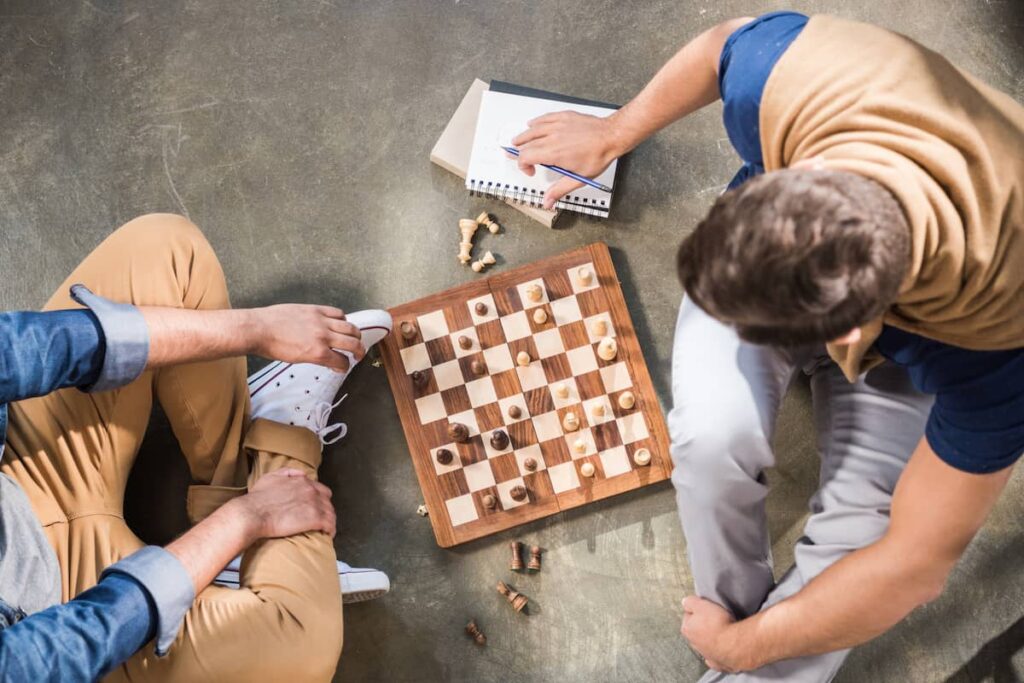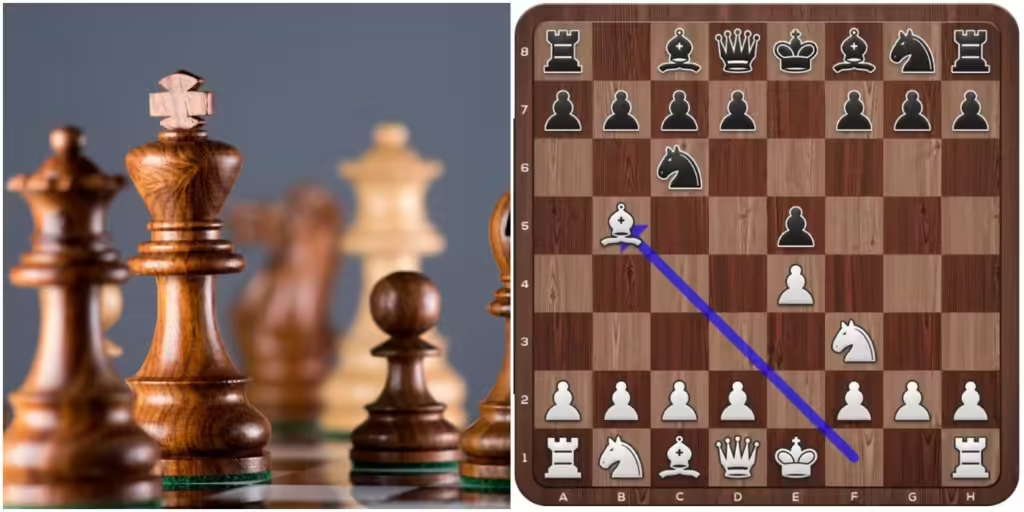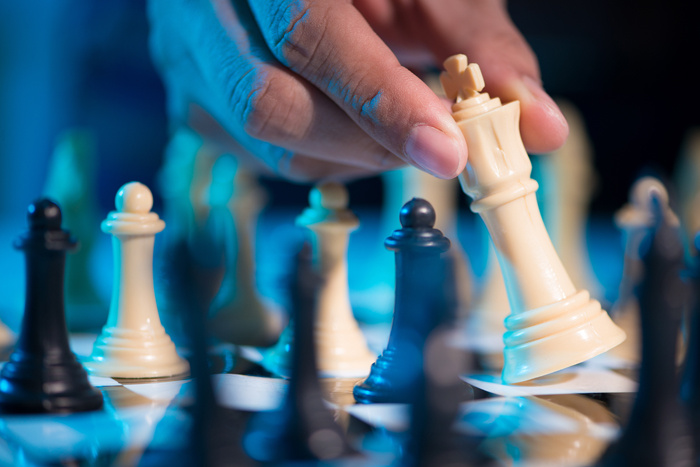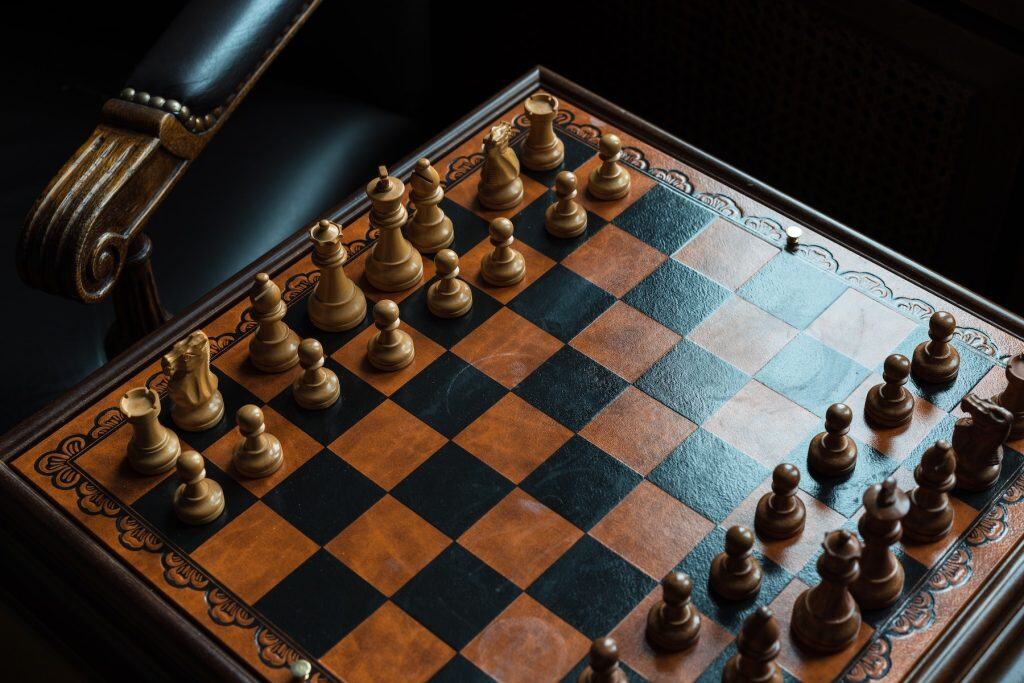Chess is a game of the mind, and unlike many physical sports, players can compete at the highest level for decades. What’s fascinating about chess, however, is how players tend to peak at different ages. While some achieve grandmaster status at a very young age, others continue improving well into their later years. This raises an interesting question: Why do chess players peak at different times in their lives?
The Cognitive Side of Chess: A Mental Marathon
Chess is often described as a game of intellect, and that’s largely true. At the heart of any chess player’s success lies their cognitive abilities—the brain’s ability to process information, calculate variations, and think strategically.
Different cognitive skills come into play at different times in a chess player’s life, which is one reason why players peak at different ages.
Young Brains and Fast Calculations
One key reason younger players, especially in their teens and early twenties, tend to rise quickly in chess is their ability to calculate variations quickly. Youthful brains are often faster at processing information, making quick decisions, and spotting tactics.
This fast mental agility helps younger players excel in tactical positions where sharp, quick calculations are critical.
For example, young players like Magnus Carlsen, who became a grandmaster at 13, and Alireza Firouzja, who is a rising star in his teens, show how younger players can dominate the chess scene due to their quick thinking and ability to calculate several moves ahead in rapid succession.
This ability to calculate quickly gives them an edge in fast-paced games, especially in formats like blitz and rapid chess.
The Role of Memory in Chess
Memory is another cognitive skill that is important for chess success, and younger players often have an advantage here too. Chess requires players to memorize opening lines, patterns, and typical positions that arise from certain openings.
Younger players, with their stronger short-term memory and pattern recognition skills, can often memorize large amounts of opening theory and tactical motifs quickly.
This memory advantage allows younger players to navigate the early stages of the game with confidence and reach middlegame positions that they are familiar with. Their ability to quickly absorb new information and opening trends also allows them to stay ahead of their older counterparts who may not be as quick to adapt to new theoretical developments.
Strategic Depth and Experience
However, chess is not just about fast calculations and memorization. As players grow older, they tend to develop deeper strategic understanding. While younger players may have an edge in speed and tactics, older players benefit from their greater experience and accumulated knowledge of the game.
This experience allows them to navigate more complex, slower positions with a level of depth that younger players may not yet have.
Experienced players like Vladimir Kramnik and Viswanathan Anand, who remained competitive well into their 40s, rely less on quick tactical shots and more on their deep understanding of positional chess.
They know when to sacrifice material for long-term compensation or how to maneuver pieces quietly in positions where brute-force calculation won’t work.
This strategic depth, combined with the wisdom gained from playing thousands of games, allows older players to remain competitive even when their calculation speed may have slowed slightly.
Their understanding of the game’s subtleties gives them a unique advantage in positions where experience and intuition are more important than raw calculation.
Physical and Mental Stamina: The Challenge of Endurance
While chess is often viewed purely as a mental game, physical and mental stamina play a surprisingly large role, especially in long tournaments.
The ability to maintain focus, stay sharp, and manage emotions over several hours is crucial to performing well at the highest levels. As players age, their stamina—both mental and physical—can shift, and this has a significant impact on when they might peak.
Youthful Energy and Resilience
Younger players often have the advantage when it comes to sheer energy. Long tournaments, where players must sit for hours, can be grueling both mentally and physically.
Younger players, like teenagers and those in their early twenties, tend to have more resilience in these demanding situations. They can maintain focus for long periods, often bouncing back quickly from losses or tough games without suffering a mental or emotional slump.
This energy is particularly useful in events where players need to grind out difficult endgames or fight through a series of matches without much rest. Many younger players thrive in these high-energy environments because they don’t fatigue as easily and can handle multiple games over the course of a day with little drop in their mental sharpness.
The Experience of Older Players
On the other hand, older players, especially those in their 30s and 40s, may not have the same level of physical energy, but they make up for it with experience in managing their energy levels and emotions.
This is where mental endurance becomes key. Older grandmasters know how to pace themselves during tournaments, avoiding unnecessary risks and saving energy for critical moments.

Players like Viswanathan Anand, who became World Chess Champion again in his 40s, and Boris Gelfand, who competed in a World Chess Championship match in his 40s, show that mental endurance and experience can make up for any slight physical decline.
These players excel at conserving their mental energy, knowing exactly when to push and when to play it safe. They’re also experts in emotional regulation, staying calm under pressure and not letting a bad game or loss ruin their overall performance in a tournament.
Fatigue and Decision Making
Fatigue can also impact decision-making during critical moments of a chess game. Younger players, with their higher energy levels, may be better suited to handle the intense focus required during complex positions.
They can process moves and calculate variations more quickly, even when mentally fatigued.
Older players, however, may start to experience mental fatigue earlier in a tournament, especially during long games. While they compensate for this with their experience, the sharpness required to calculate deeply in tactical positions can sometimes be affected by age-related factors.
However, their vast experience in handling endgames and positional play means they don’t always need to rely on deep calculations. Instead, they lean on their intuition and knowledge built over decades.
The Role of Physical Fitness in Chess
Interestingly, many top players have recognized the importance of physical fitness as a way to improve their stamina in tournaments. World Champion Magnus Carlsen is known for incorporating regular physical exercise into his routine, believing that a fit body supports a sharp mind.
Physical endurance can help players maintain focus and clarity during long games, especially in high-pressure situations.
For older players, maintaining physical fitness becomes even more crucial to staying competitive. Regular exercise helps them manage the physical toll of long tournaments, preventing fatigue from affecting their decision-making.
Players like Garry Kasparov were famous for staying in peak physical shape throughout their careers, which allowed them to maintain their competitive edge even as they aged.
The Impact of Experience and Wisdom

While youth brings energy, speed, and resilience, experience plays an equally important role in chess. Many players who peak later in life rely heavily on the wisdom gained from years of playing and studying the game.
Experience gives older players a deeper understanding of chess patterns, strategic ideas, and how to handle different types of positions. This wealth of knowledge allows them to make better decisions in complex situations, where raw calculation alone may not be enough.
Pattern Recognition: A Grandmaster’s Secret Weapon
One of the most important skills that experienced chess players develop over time is pattern recognition. Through years of playing and studying thousands of games, grandmasters become familiar with typical patterns that frequently occur on the chessboard.
These patterns might involve tactical motifs, such as forks and pins, or strategic ideas, such as typical pawn structures or strong piece placements.
For younger players, identifying these patterns might require conscious calculation and effort. But for experienced players, these patterns are almost instinctive.
They’ve seen similar positions so many times that their brains recognize them immediately, allowing them to find the best moves without needing to calculate every possibility. This is one reason why older players with decades of experience often excel in positions that require deep positional understanding rather than immediate tactical calculations.
The Value of Game Analysis
One of the ways chess players, especially grandmasters, improve over time is through post-game analysis. After every game, whether it’s a win, loss, or draw, grandmasters carefully review their games to learn from their mistakes and identify areas for improvement.
This practice of self-reflection helps players of all ages to improve, but it’s especially valuable for older players.
With years of experience, seasoned players know how to learn from their mistakes without letting them affect their confidence. They have the maturity to recognize where they went wrong in a game, adapt, and avoid making the same mistake in the future.
This process of constant self-improvement allows older players to continue evolving and refining their skills, even if their raw calculation speed may not be what it once was.
Younger players may have faster calculation skills, but older players benefit from this vast pool of experience, which allows them to avoid pitfalls and recognize common errors quickly.
Grandmasters like Vladimir Kramnik or Boris Gelfand are prime examples of players who, well into their 40s, used their experience and knowledge to compete at the highest levels, often outplaying younger opponents in strategically complex positions.
Understanding Psychological Pressure
In chess, psychological pressure can play a significant role, especially in top-level tournaments. Younger players, with less experience, may sometimes feel overwhelmed by the pressure of a critical match or tournament situation.
They might become nervous or overconfident, leading to mistakes.
On the other hand, older, more experienced players have been in high-pressure situations countless times. They know how to manage their emotions, stay calm, and avoid impulsive decisions.
For example, a seasoned player who’s been through many tough losses knows how to recover from a bad game and come back stronger, whereas a younger player might struggle to regain their confidence.
Learning to Adapt
Chess is constantly evolving, with new opening ideas, strategies, and trends emerging every year. While this can present a challenge for older players, who may be more set in their ways, the best grandmasters know how to adapt their play to meet the demands of modern chess.
Take Viswanathan Anand, for example. Although he became World Champion for the first time in 2000 and remained at the top for over a decade, Anand has continued to stay competitive in modern chess even in his 50s.
His ability to adjust his opening repertoire, incorporate new ideas, and keep up with younger players shows how experience, combined with adaptability, can keep a player competitive long after their younger years.
The Role of Technology in Chess Training

Another important factor in why chess players peak at different ages is the rise of technology and how players use it to train. In recent decades, chess engines and databases have revolutionized the way players study the game.
While the top players from earlier generations relied on books, personal analysis, and in-person coaching, today’s grandmasters have access to powerful tools that help them prepare better and faster than ever before.
Younger Players and Chess Engines
Younger players, who grew up with technology, are often more comfortable using chess engines and databases to analyze their games. Tools like Stockfish, Leela Chess Zero, and online platforms like ChessBase give young players the ability to study openings, test tactics, and analyze games with pinpoint accuracy.
Unlike older players who may have developed their understanding of chess without such advanced tools, younger players benefit from having this technology at their fingertips from an early age.
This allows them to catch up with and even surpass the previous generation much faster. It’s not uncommon to see teenage grandmasters today who have absorbed vast amounts of opening theory and positional ideas simply by working with engines.
For example, players like Alireza Firouzja and Andrey Esipenko have quickly risen through the ranks by incorporating modern engines into their training routines.
These young talents are able to not only analyze games but also develop deep opening repertoires that stand up to the highest level of competition, all thanks to the precision and speed of chess engines.
Older Players and Adaptation to Technology
While younger players may have an advantage in terms of comfort with technology, many older grandmasters have successfully adapted to the modern chess landscape. Players like Garry Kasparov, who dominated the chess world before the era of powerful engines, later embraced these tools to improve their preparation.
Older players often blend the wisdom and experience they’ve gained over decades with modern technology to stay competitive.
For instance, a player like Vladimir Kramnik uses engines not just to memorize opening lines but to test ideas, find novelties, and gain a deeper understanding of positions. By incorporating technology into their training, these experienced players are able to stay on top of the latest trends in chess theory.
Additionally, technology allows older players to extend their peak years, as it makes preparation and analysis more efficient. Chess engines can handle the heavy lifting of complex calculations, freeing up time for players to focus on strategic and practical considerations.
Online Chess and Its Impact
The rise of online chess has also changed the landscape of the game, making it easier for players of all ages to compete regularly and improve their skills.
Younger players, who are often more active on platforms like Chess.com and Lichess, benefit from playing hundreds or even thousands of games against strong opponents from around the world. This access to frequent, high-level competition helps accelerate their growth.
For older players, online chess provides a different kind of advantage: convenience. Players no longer need to travel as frequently to tournaments, which can be physically and mentally taxing. Instead, they can play online matches and participate in online tournaments, maintaining their form while minimizing the stresses of travel.
This is especially important for players in their 30s, 40s, and beyond, as it allows them to stay sharp without the wear and tear of constant travel.
The Influence of Life Outside Chess: Personal Factors and Their Impact

Another key reason why chess players peak at different ages involves factors outside the chessboard. As players age, their personal lives, careers, and responsibilities can significantly impact their chess performance and commitment to improvement.
This aspect is often overlooked, but it plays a major role in shaping when and how a player peaks.
Chess in Early Life: Focus and Dedication
For many young players, chess can be a singular focus. Players like Magnus Carlsen or Alireza Firouzja were able to dedicate themselves fully to chess during their teenage years and early twenties, allowing them to rise quickly through the ranks.
They had the time and energy to invest in hours of daily study and practice, without the distractions that often come later in life.
In these early years, young players have fewer responsibilities. With the support of family, coaches, and sometimes even sponsors, they can pour all their efforts into chess improvement.
The sheer number of hours spent playing, studying openings, solving puzzles, and reviewing games adds up over time, creating the rapid improvement we often see in teenage prodigies.
This intense focus early on is often crucial for reaching the top levels quickly. Players like Bobby Fischer, who became the World Champion at 29, benefited from an early and uninterrupted focus on chess during their developmental years.
Midlife: The Balance Between Chess and Life
As players grow older, new responsibilities often come into play. By their 30s or 40s, many grandmasters have other commitments, such as family life, jobs, or business interests.
Managing these responsibilities can make it more difficult to maintain the same level of chess training and focus that younger players enjoy.
For example, top players like Vladimir Kramnik or Levon Aronian have spoken about how the demands of family life—raising children, managing personal commitments—can affect their chess careers.
These responsibilities sometimes cause a natural decline in a player’s focus and energy devoted to chess, which may explain why many players’ performance starts to dip as they approach middle age.
Additionally, as players enter their 30s and 40s, they may find it harder to compete in long, grueling tournaments that require peak physical and mental stamina. Balancing chess with the demands of personal life often becomes a challenge, and many players may choose to take fewer tournaments or reduce their study time to accommodate their life outside the game.
Returning to Chess Later in Life
Interestingly, some chess players experience a resurgence later in life, particularly once personal commitments become less pressing. After raising a family or stepping back from other career commitments, some players are able to return to chess with renewed focus.
For example, Nigel Short, a former World Chess Championship contender, remained active in high-level chess well into his 50s. Similarly, Vasily Ivanchuk and Anatoly Karpov have continued to compete at an advanced age, using their wealth of experience to stay competitive.
These players may not be as physically sharp as they once were, but their depth of knowledge and experience, combined with fewer life distractions, allow them to stay relevant in the chess world.
In some cases, these players focus more on coaching, writing, or commentary, but their love for the game never fades. They remain active in the chess community, continuing to contribute to the game they dedicated their lives to.
Career Transitions in Chess
Not every grandmaster follows the same career trajectory. Some players, after reaching the top levels of chess, transition into other areas, such as coaching, writing, or broadcasting.
These players may not be competing as regularly in tournaments, but they still contribute significantly to the chess world.
Garry Kasparov, for instance, retired from professional chess in 2005 to focus on politics and writing, though he remains highly active in the chess community through his books, public appearances, and coaching younger players.
Similarly, Judit Polgar, the strongest female player in history, transitioned to coaching and commentary after retiring from active play. These career transitions allow players to stay connected to chess even when they are no longer actively competing.
For some players, stepping back from competitive chess allows them to pursue other passions while still contributing to the development of the next generation of players. While they may no longer be chasing tournament victories, their impact on chess remains significant.
Final Thoughts on Why Chess Players Peak at Different Ages
Chess is a complex game that requires a unique blend of cognitive skills, experience, and mental stamina. Unlike many physical sports, chess players can remain competitive for decades, and their peak performance can happen at very different stages of life.
There are multiple factors—both personal and chess-related—that influence when a player reaches their highest level.
Cognitive Abilities Evolve with Age
Younger players often excel due to their fast calculation skills and sharp tactical awareness. With age, these quick mental reflexes may slow, but older players compensate with deeper strategic understanding and vast experience.
This balance of youth and wisdom explains why some players peak early while others grow stronger over time.
Physical and Mental Stamina Matter
While chess is primarily a mental game, physical stamina and mental endurance play a huge role, especially in long tournaments.
Younger players typically have higher energy levels, while older players need to manage their energy and focus more carefully to stay competitive over long matches and events.
The Experience Advantage
Experience is a crucial factor in why some players peak later in life. Older players have spent decades building their knowledge of the game, recognizing patterns, and honing their positional understanding.
This gives them an edge in slow, strategic games where experience is more valuable than quick calculations.

Technology: A Double-Edged Sword
Technology, particularly chess engines, has transformed the game. Younger players tend to embrace these tools early, accelerating their rise to the top.
However, older players who adapt to modern training methods can also benefit from technology, using engines to refine their preparation and stay competitive against younger opponents.
Life’s Responsibilities and Chess
Life outside of chess also affects when players peak. Younger players often have the luxury of focusing solely on chess, while older players must balance personal responsibilities, like family and career.
This can lead to different peaks for different players, as life stages and commitments evolve over time.
A Lifetime Journey in Chess
Chess is not just a game you outgrow with age; it’s a lifelong journey. Many players reach their peak later in life when they combine decades of learning with the wisdom of experience.
Whether competing, coaching, or contributing in other ways, the love for the game keeps players engaged and passionate, long after their competitive peak.
Wrapping it up
Chess players peak at different ages due to a combination of factors, including cognitive abilities, physical and mental stamina, experience, and personal life circumstances. Younger players often excel with quick calculations and energy, while older players bring deeper strategic understanding and emotional resilience to the board.
Technology also plays a significant role, helping younger players rise faster and allowing older players to stay competitive. Ultimately, every player’s journey is unique, and chess is a lifelong game where growth and improvement can happen at any age.
If you’d like more insights on improving your own chess skills, feel free to connect with us at the Global School of Chess!
READ NEXT:

